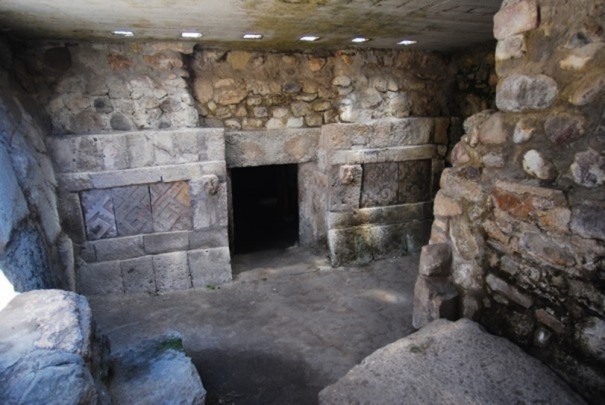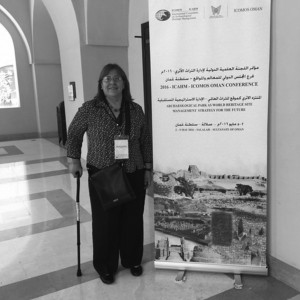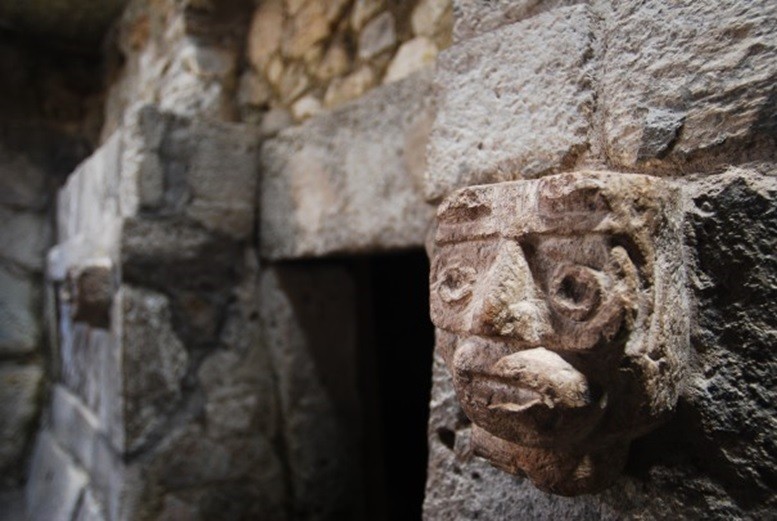One common feature in the architectural composition of Zapotec cities in the Classic period was the formal construction of stone masonry tombs. These tombs were generally located below the floors of the houses of both common and high-status people, and their material remains have helped archeologists to discern the funerary customs of the pre-Hispanic society.
The Triple Tomb of Yagul displays the innovations of the Late Classic period. It is actually three tombs whose entrances come together in an exclusive funerary space, forming together a kind of cube. John Paddock numbered them Tombs 30, 3 and 29. The complex lies in the center of Courtyard 4, a quadrangle bordered by four mounds that preserves the layout of plazas first established at Monte Albán.
The unusual facade of Tomb 30 stands out due to the profusion of decoration on a horizontal central tablet, which frames two panels of meander patterns carved in rectangular sections. There is a small human head carved in stone on the jambs to either side of the entrance. These heads are known as “nails” due to the long section embedded in the wall behind them. The antechamber has become the main space in this tomb, as it forms the “arms” of a cross, and the chamber is a lesser area at the back.
The facade of this tomb displays various esthetic motifs which are common in Mesoamerica, although they are rarely placed together on funerary architecture, as is the case for the xicalcoliuhqui or stepped meander pattern with vestiges of red paint, Zapotec panels and the aforementioned small faces. All of this has been achieved by the delicate stone-carving work, which gives it a unique character.
This set of tombs, and the exceptional stonework of its fine architecture, led John Paddock and Ignacio Bernal to believe that they were really constructions from the Mixtec cultural tradition, based on a supposed “Mixtec period” identified by Alfonso Caso at Monte Albán. This declaration sparked a debate on the Mixtec presence in the Valley of Oaxaca, which to date has not been fully resolved.
In any event, the Triple Tomb of Yagul represents novelty of construction and design in a city that was prepared to innovate on esthetic ideas that had their origins in Monte Albán centuries earlier. Its refined architecture and privileged place within the urban layout give us reason to visit this pre-Hispanic jewel and preserve it as part of the roots of the great cultures that emerged in pre-Hispanic Mexico.








